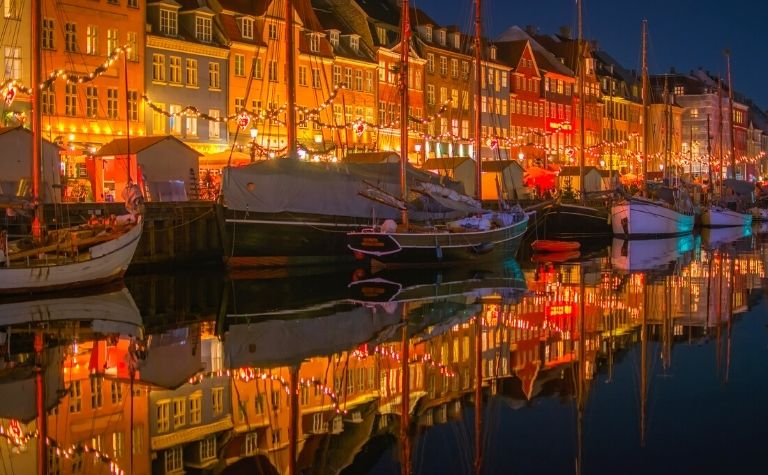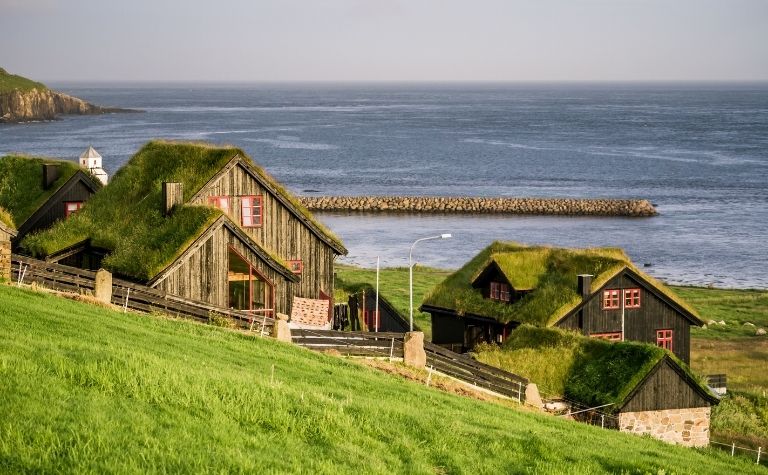Denmark, a North European country, is renowned for being one of the world’s happiest countries.
It is also among the least corrupt nations and has one of the world’s cleanest harbors (Copenhagen). Moreover, Denmark is one of the Scandinavian countries.
Denmark is considered Scandinavian as its history and culture are intertwined with other Scandinavian countries, including Sweden and Norway.
Denmark’s geographical setting and climatic conditions also make it similar to the other two countries in the northernmost part of the world.
The rest of this article discusses more details on Denmark, including why it is a Nordic country.
It will also highlight other Scandinavian countries and explain whether the three are likely to unite in the future.
Also, see Is Denmark the Netherlands (or Holland)? to learn more.

Is Denmark Considered a Nordic Country?
Some sources used the term “Nordic” interchangeably with “Scandinavian” to refer to countries in Northern Europe. [1]
However, Nordic differs slightly from Scandinavian as it represents a wider region, incorporating more countries. Nordics (Nordens) share heritage, culture, and social structures. [2]
Denmark is part of the Nordics as it shares in its history and past inter-governmental unions. Other Nordic countries include Sweden, Norway, Finland, and Iceland.
The Nordic region also includes territories associated with these five countries, including Greenland, Åland, and the Faroe Islands.
The term “Nordic” originates from “le pays Nordiques,” a phrase that the French invented to mean “Nordic Countries.”
It was after a long-term confusion on which nations constituted the Scandinavian countries in Northwest Europe.
Therefore, Nordic represents a region encompassing five countries with linguistic, geographical, cultural, and historical similarities.
According to some sources, the term “Nordic” is an indirect translation of the local term “Norden,” which means “The North (ern) lands.”
Hence, it refers to the region where the “Nordbo” or “northern dwellers” lived. [3]
Presently, this region encompasses Denmark, Sweden, Norway, Finland, Iceland, and independent territories (Åland and the Faroe Islands) related to these nations.
Nordic countries have a history of cooperation that dates back to World War II when these nations sought to have a unified defense against their foes.
However, their unity grew after several attempts to join forces, including the move by Denmark, Iceland, and Norway to join NATO (North Atlantic Treaty Organization) against the will of Finland and Sweden.
Moreover, efforts to form an economic customs union and a single market among the five countries were futile.
After several attempts to unite, the five countries cooperated to form the Nordic Council in 1962. [4]
The council is an inter-parliamentary association comprising 87 representatives (Members of Parliament) from the Nordic countries, and its framework arises from the Helsinki Treaty of 1962.
In the present day, the Nordic countries continue to have good relations and linguistic similarities.
Also, see Why Is Denmark Part of Greenland? to learn more.

What Countries Are Considered Scandinavian?
Most people in other parts of the globe do not differentiate between “Scandinavian,” “Scandinavia Peninsula,” and “Nordic.”
Hence, they use the three terms to refer to countries within the northernmost part of Europe. So, which are the Scandinavian countries?
While some sources list five Scandinavian countries, most agree that Scandinavia only includes Sweden, Denmark, and Norway.
The three countries have striking similarities, including their language, history, and culture.
“Skandinavien,” a common term in the Norwegian, Swedish, and Danish languages, refers to the ancient dwellings of the Norsemen and the current Scandinavian region.
Scandinavian countries are presently independent nations with a history of bilateral unions.
For instance, Denmark and Norway had formed the Dano-Norwegian union, which dissolved in 1814.
Similarly, Sweden and Norway had united under a single monarch from 1814 to 1905.
Moreover, the three countries also once cooperated to form the Kalmar Union from 1397 to 1523 when Sweden became an independent nation.
Sweden, Denmark, and Norway share several similarities.
Firstly, the three countries use mutually intelligible Scandinavian languages (Swedish, Norwegian, and Danish) originating from a Germanic language used by ancient ‘northern dwellers.’
Secondly, the Scandinavian countries share a common geographical area that also comprises the Scandinavian Peninsula.
However, only Sweden and Norway are part of the Peninsula, a vast landscape covering an area of 750,000 m² (8,072,932.81 ft²).
Though Denmark is not within the Peninsula, the country marks the southernmost part of the Scandinavian region, south of Norway, and Southwest of Sweden.
The three countries also share an identical flag design, containing the Christian cross.
Denmark was the first among the three countries to incorporate the design in its flag in the 14th century and introduced it to Norway and Sweden during its supremacy.
Currently, the Scandinavian countries are renowned for being the globe’s top five countries leading in the quality of life ranks. [5]
Denmark, Sweden, and Norway have common cultural and social values that promote the well-being of their people.
Hence, the three are among the world’s happiest nations.
Also, see What Is Denmark Known For? to learn more.

Will Scandinavian Countries Ever Unite?
While the three Scandinavian countries have united in the past, many people wonder if this can recur.
Well, Denmark, Sweden, and Norway share a common heritage of the early settlers who resided in the North after the last Ice Age.
However, can these countries form a union with the current political, economic, and social setting?
There’s a slight chance that Scandinavian countries will unite in the future.
The cooperation would probably arise due to a crisis that requires joint effort or potential political or economic benefits.
However, a few factors may hinder the unification of the three nations.
Scandinavian countries are famous for having high well-being and health indexes; hence, they would complement each other socially if united.
Moreover, since they have small populations individually, a union would boost their representation in the global arena.
Thirdly, the total GDP would be $1.3 trillion, ranking in 17th position globally, if the Scandinavian countries united.
Nevertheless, the Scandinavian countries may not unite due to political reasons.
For instance, a joint government may experience opposition among the three, leading to conflicts.
Secondly, a joint economy may only benefit Sweden and Denmark, whose GDPs per capita ($51,687 and $60,213, respectively) are lower than Norway’s ($75,826).
Moreover, common management of resources may require a lot of trust among the three nations, and it might not be a reality.
Conclusion
Denmark is a Scandinavian country as it has historical, cultural, and geographical similarities with Sweden and Norway.
Also, see Is Denmark Socialist? to learn more.
References:
[1] Source
[2] Source
[3] Source
[4] Source
[5] Source
